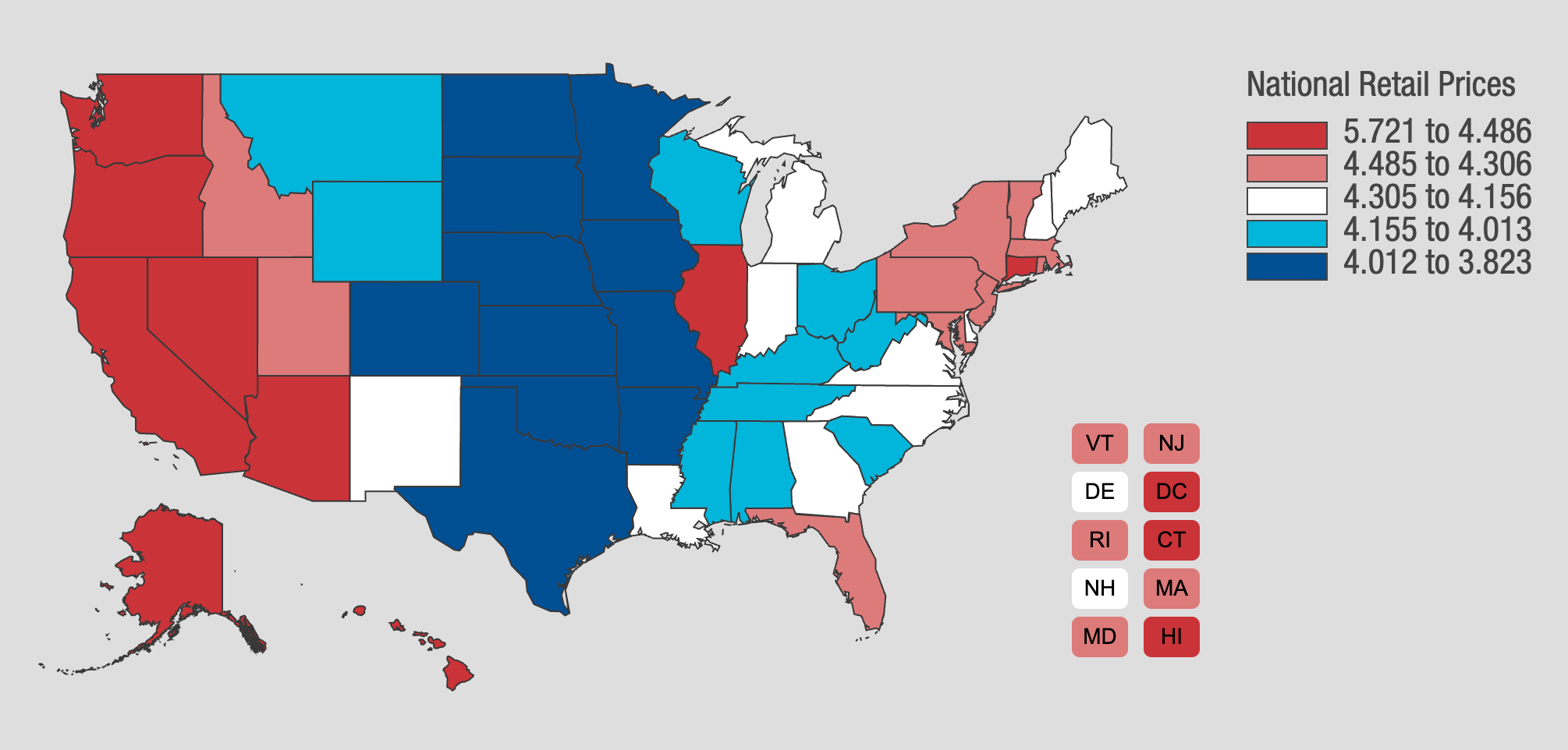Gas Price Watch: Another New Record, But Not By Too Much
America consumes almost double the oil it produces every day
Welcome to Gas Price Watch, where every day we will tell you just how painful a visit to the pump is going to be. Expect this to stick around for a while.
We hit a new high yesterday of an average of $4.32 for a gallon of unleaded gas. The good news is, gas prices didn't completely soar overnight for the entire country. The bad news is, the average did inch up by a whole cent to a brand new high — and by a whole lot more in some of the hardest hit states. According to AAA's gas price tracker, the average price of that same gallon of gas will now run you $4.33.
That number is pretty cold comfort however, if you live in the five states hit hardest by rising gas prices, where the average cost for a tank of fuel is leaping up faster than a nudist at a windy bonfire. Let's break it down, shall we?

Here is where you can find the highest average gas prices in the country in order of highest price for a gallon regular:
-
California – $5.72 Regular | $5.90 Mid | $6.03 Premium | $6.29 Diesel
-
Nevada – $4.90 Regular | $5.12 Mid | $5.32 Premium | $5.22 Diesel
-
Hawaii – $4.81 Regular | $5.03 Mid | $5.29 Premium | $5.13 Diesel
-
Oregon – $4.73 Regular | $4.91 Mid | $5.12 Premium | $5.37 Diesel
-
Washington – $4.72 Regular | $4.92 Mid | $5.10 Premium | $5.38 Diesel
Here is the lowest average price of gasoline in the country in order of lowest price per gallon of regular:
-
Kansas – $3.82 Regular | $4.09 Mid | $4.33 Premium | $4.67 Diesel
-
Missouri – $3.85 Regular | $4.11 Mid | $4.38 Premium | $4.73 Diesel
-
Oklahoma – $3.87 Regular | $4.13 Mid | $4.37 Premium | $4.77 Diesel
-
North Dakota – $3.90 Regular | $4.12 Mid | $4.35 Premium | $4.76 Diesel
-
Arkansas – $3.91 Regular | $4.20 Mid | $4.50 Premium | $4.82 Diesel
AAA released a study yesterday that asked American drivers just how high gas prices had to go before they changed up their daily lives. It found that 59 percent said they would change their driving and lifestyle habits once gas hit over $4 a gallon. That response rose to three-quarters when asked about $5 a gallon gas, which Californians are already suffering under and much of the American west is creeping towards. While day to day life may change, looking ahead towards the summer road trip season, most Americans aren't changing their plans, with 52 percent intending to travel and 42 percent saying that gas prices won't stop them from hitting the road.
Republican lawmakers are demanding that the U.S. open more drilling fields to combat the rise in gas prices, but that won't really do any good, CNN reports. Drilling permits have been issued at the same brisk pace under President Biden as under Trump, but we can't drill our way out of the global economy. The U.S. is already the top producer of crude oil, as well as its hungriest consumer. America pumped 11.6 million barrels of oil per day in December. The problem is we consumed about 21 million barrels in 2019, the most recent year with stats available—about 20 percent of global supply. Experts told CNN that while the U.S. has close to 38 billion barrels sitting under our feet, it's not the kind of crude we're looking for:
The idea that the US can be fully energy independent — and that it would combat rising gas prices — is a fantasy, numerous experts told CNN.
"What Americans and US officials really care about is the price of gasoline, and that has almost nothing to do about whether we're energy independent or not," said Bob McNally, president of Rapidan Energy Group. "Can the US wall itself off from volatility in the global oil market? The answer is no."
It's too early to tell whether the current price shock will spur a change in how Americans consume oil, but experts said it's forcing a hard look at how the country uses it.
"The issue the US is grappling with from a security standpoint — we're dependent on oil," Sam Ori, executive director of the University of Chicago's Energy Policy Institute, told CNN. "The idea that if we produce more oil in some way it would help with that problem — it's just not true."
We are part of a global economy, one that is currently being rocked by war and still struggling to shake off supply chain problems. While only 3 percent of the oil consumed in America comes from Russia, the war is throwing the global market for crude into chaos, the Washington Post reports. Experts told the Post that as long as there is conflict in Ukraine, we can expect gas prices to remain sky high. There's simply no extricating our country from that system and still supplying our energy needs.
Welp, on that note, good luck and I hope you manage to have a decent weekend under the specter of war and massive inflation. We'll see you on the other side Monday!
-
